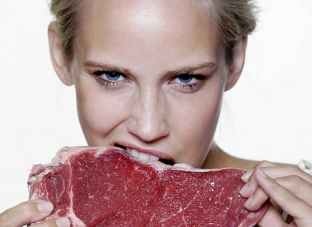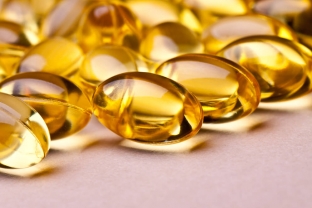Osteoporosis – This is a disease that, by affecting bone tissue, leads to bone fragility and exposes the patient to an increased risk of fractures. Patients with osteoporosis can, for example, break a leg as a result of insignificant loads for a healthy person. Various factors lead to a decrease in bone density, among which are metabolic disorders, hormonal disorders, medication, age, and even nutrition. Certain foods can lead to a decrease in bone density and increase the risk of osteoporosis. estet-portal.com will talk about them in this article.
Foods that lead to a decrease in bone density
You probably know that vitamin D and calcium – pledge of strong bones. However, there are also substances that contribute to a decrease in bone density. These include:
1. Too much protein
If a person consumes too much protein, the body produces chemicals – sulfates, which lead to "leakage" calcium from bones. These negative effects on bone density are predominantly animal proteins. A 10-year study of 116,686 women by Harvard University found that women who ate red meat at least 5 times a week had a higher risk of fractures than those who ate red meat just once a week.

2. Excess caffeine
Swedish scientists conducted a study in which they found that 330 mg or more of caffeine per day (about 4 cups of coffee or more) increases the risk of bone fractures. In this case, the risk increases in case of insufficient intake of calcium. At the same time, the study did not observe a negative effect of tea on bone density, only coffee has such a negative effect.

Cola (including diet) also negatively affects bone health. Most likely, this is due to the presence of phosphorus in it.
3. Vitamin A in the form of retinol
Vitamin A (retinol) at doses greater than 3,000 micrograms per day doubles the risk of hip fracture in women compared to a lower dose – 1500 mcg. Although vitamin A is essential for bone growth, too much vitamin A in the form of retinol interferes with the absorption of vitamin D, resulting in decreased bone density. Retinol is found in animal products such as liver, egg yolks, dairy products and, of course, retinol supplements. Pro-vitamin A (carotene), which is contained in carrots, does not adversely affect bone tissue.

Other factors that lead to decreased bone density
Bone density can be adversely affected by the following substances:
- sodium in large quantities promotes the excretion of calcium in the urine and sweat, so you should not abuse salt and processed foods;
- oxalates (oxalic acid salt) – another form of salt – may interfere with calcium absorption if oxalates and calcium are found in the same product (spinach, rhubarb, sweet potatoes); of course, such foods are part of a healthy diet, but they should not be taken as sources of calcium;
- wheat bran – 100% wheat bran, if consumed simultaneously with calcium, also interferes with the absorption of the mineral; therefore, it is better to take such bran a few hours before or after calcium;
- excessive consumption of alcoholic beverages has also been associated with decreased bone density, as alcohol interferes with the absorption of both calcium and vitamin D.
How to maintain normal bone density and reduce the risk of osteoporosis
A diet that is deficient in fruits and vegetables and has an excess of animal proteins and carbohydrates leads to acidosis, which is the cause of reduced bone density and the development of bone disease.
The acidic effects of such a diet can be neutralized by including a sufficient amount of fruits and vegetables. This will keep your bones healthy for a long time.
Balanced nutrition – not an easy task. However, it is necessary to accustom yourself to eating predominantly healthy foods, taking into account the effect of the foods you eat on the absorption of calcium and vitamin D.






Add a comment